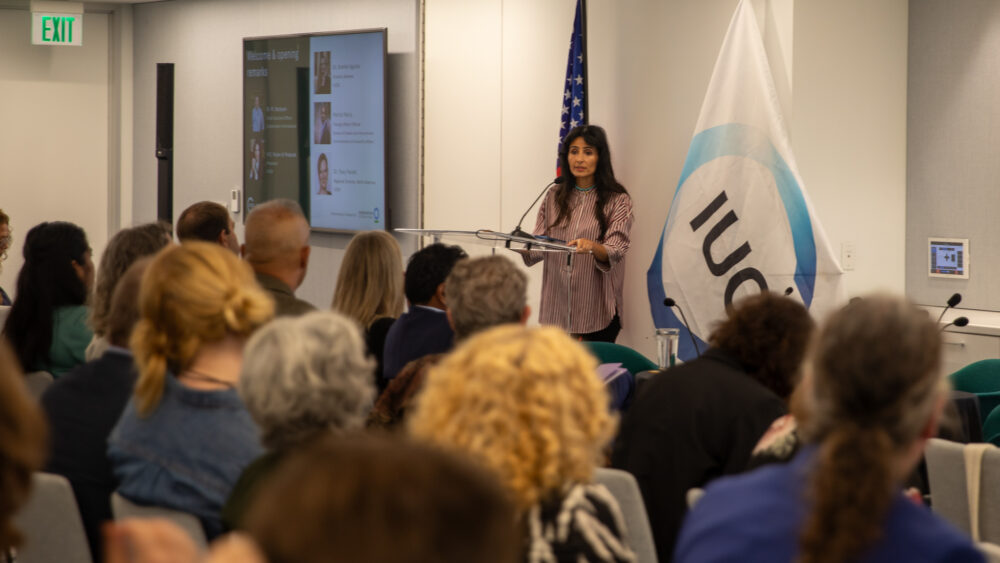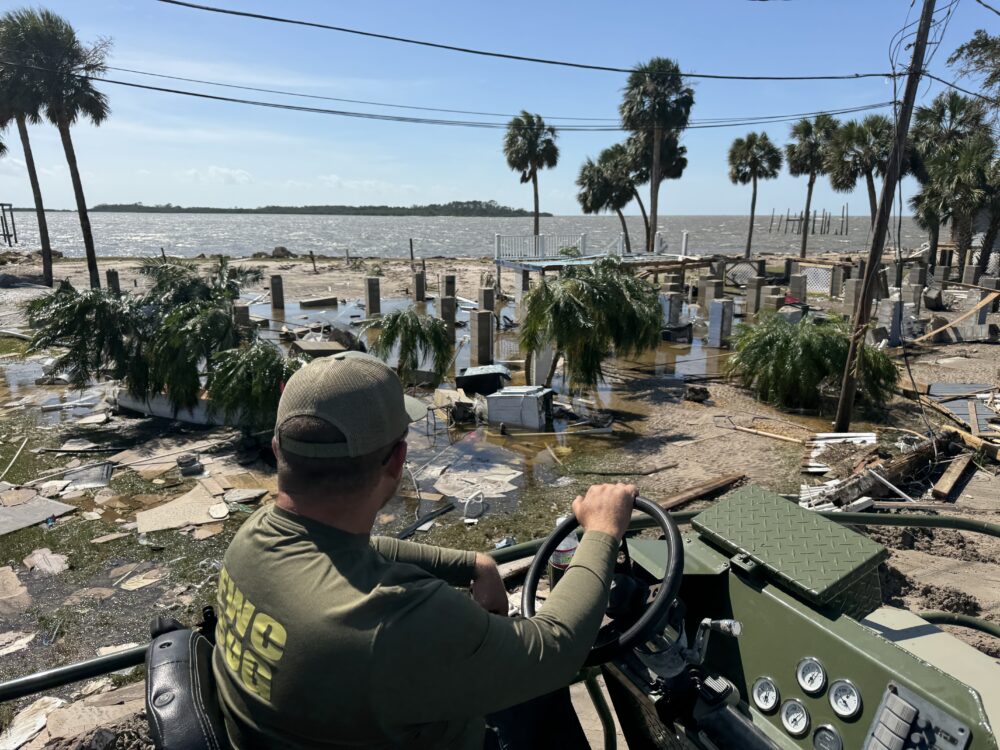We have much more to do and your continued support is needed now more than ever.
In the “Endangered Species Capital of the World,” A Win for Hawaiian Seabirds

Out of the darkness on a high volcanic slope, a haunting chorus of wails and shrieks pierces the night sky.
This is the enigmatic call of the Hawaiian petrel, or ‘Ua‘u, an iconic member of Hawai‘i’s natural heritage. Once common across the islands, human activities have driven these birds—like so many native Hawaiian species—to the brink of extinction. In 1967, the U.S. Fish and Wildlife Service officially listed the petrel as a federally endangered species.
But a recent series of wins is sparking renewed hope for the petrels. Successful efforts by the Conservation Council for Hawai‘i (CCH), the National Wildlife Federation’s Hawai‘i affiliate, and other environmental groups are paving a pathway to recovery for these birds, offering lessons other conservation efforts can follow.
The Story of the ‘Ua‘u
The Hawaiian petrel is a large oceanic seabird, with deep gray-brown back and wings contrasting with clean white undersides. It spends most of its life far out at sea, hunting schools of fish, squid and crustaceans, occasionally wandering as far as the west coast of the U.S. It’s unique for its diversity of nesting habitats, often utilizing high-elevation, mountainous slopes that can be significantly farther inland than other seabird nesting colonies.
The petrels hold a unique place in native Hawaiian culture, according to Bret Nainoa Mossman, a state natural resources specialist and CCH board member. Once common, the birds were a key food source for native Hawaiians. Breeding colonies were even used to denote traditional land boundaries. By nesting far inland, they play a critical role in Hawaiian ecosystems.
“They’re this vital connection between the ocean and the land, because they’re bringing in nutrients from way out in the ocean into our more mountainous areas, and feeding the forest,” Mossman said.
But over the last two centuries, European settlement has pushed the Hawaiian petrel to near-extinction—part of a broader trend that has earned Hawai‘i’ the nickname “endangered species capital of the world.” For petrels, non-native predators—including feral cats, rats and mongoose—pose the primary threat, but human infrastructure also interferes with behavior.
Birds use natural lights, such as from the moon and stars, to orient, so artificial light from resorts, streetlights and other sources creates confusion for young petrels. Disoriented birds may circle lights before they eventually “fallout” from exhaustion, suddenly dropping from the sky. On the ground, tired birds are vulnerable to predators, vehicle collisions, and starvation.

A Legal Windfall for the Hawaiian Petrel
In 2022, CCH first got word of several grounded petrels on the property of Maui’s Grand Wailea Hotel. The hotel sits at the base of Haleakalā, a volcanic mountain home to one of Hawai‘i’s largest remaining petrel colonies. CCH, led by Executive Director Jonee Peters, has since sued the hotel twice to reduce its impact on the birds, with the latest settlement coming with an agreement from the hotel to reduce the brightness of its lights and fund projects supporting petrel recovery.
Meanwhile, just a few weeks ago, CCH reached another major settlement with Hawaiian Electric, the state’s largest electricity provider, which resulted in over $1.4 million over three years to protect petrels and other seabirds. Only days later, it filed a new lawsuit against Maui County over streetlights that pose hazards to birds.
While CCH is clear that far more needs to be done to protect petrels, the organization hopes these legal victories send a clear message to other private and state actors to change their behavior. These wins are building on other encouraging signs for petrel populations, and thanks to other recent conservation efforts, like the construction of predator-proof fences around key nesting colonies, populations in certain areas are beginning to rebound.

A Roadmap for Hawaiian Birds
Sadly, many of Hawai‘i’s other birds remain under existential threat. Issues affecting seabirds—predators, light pollution—tend to be relatively easier to address with basic intervention tactics, while the primary problem affecting forest birds today—diseases spread by invasive mosquitoes—is far harder to manage. Of the eight Hawaiian bird species declared extinct in 2023 alone, all were small forest birds such as honeycreepers.
But this trend of extinction isn’t inevitable, according to Mossman, who believes we are capable of recovering all of Hawai‘i’s endangered birds.
“The tools that we need to save these species exist already,” he said. “The thing that we’re missing is the people power and the resources.”
And there are signs of hope, even for forest birds. Selectively bred mosquitoes infected with a common and safe bacterial strain, for example, have shown promise at reducing populations of disease-carrying species, and programs supported by CCH are underway to release these insects in important bird habitats.
Scaling these solutions, however, will require significantly more investment, particularly from the federal government. One federal proposal, the Recovering America’s Wildlife Act, could help fund the largest investment in Hawaiian bird conservation in American history.
But above all, Peters believes progress is only possible if we embrace collective action and stewardship over our lands.
“If everybody plays a little part—we call this “kuleana”, or responsibility—in protecting the native species and ecosystems in Hawai‘i, I think we could be a beacon for the world,” Peters said.
It’s this spirit of kuleana that has allowed the call of the ‘Ua‘u to begin reclaiming the night sky, high in the Hawaiian mountains. Whether we give the same opportunity to other species is up to us.
Read more: How Hawaiian Culture is Evolving Alongside Endangered Species





















